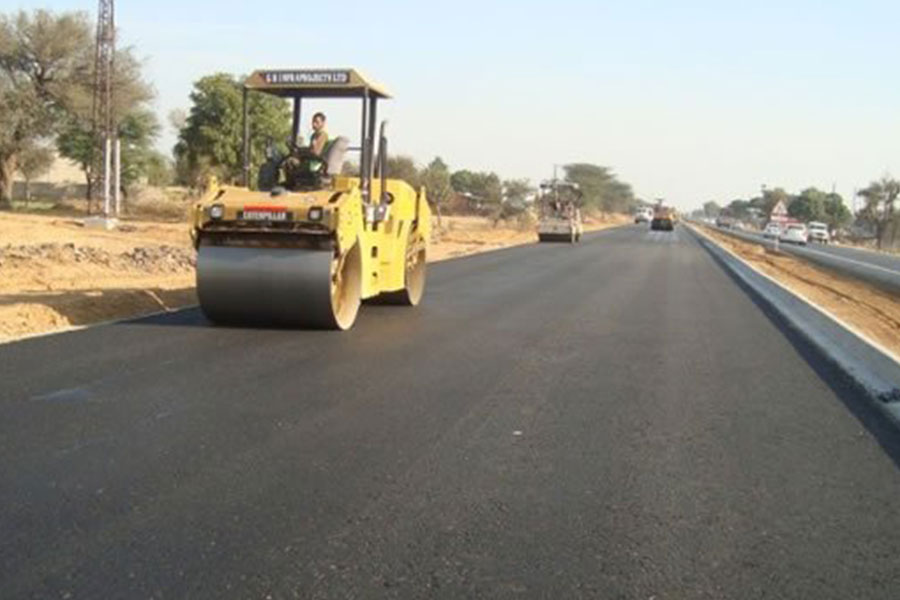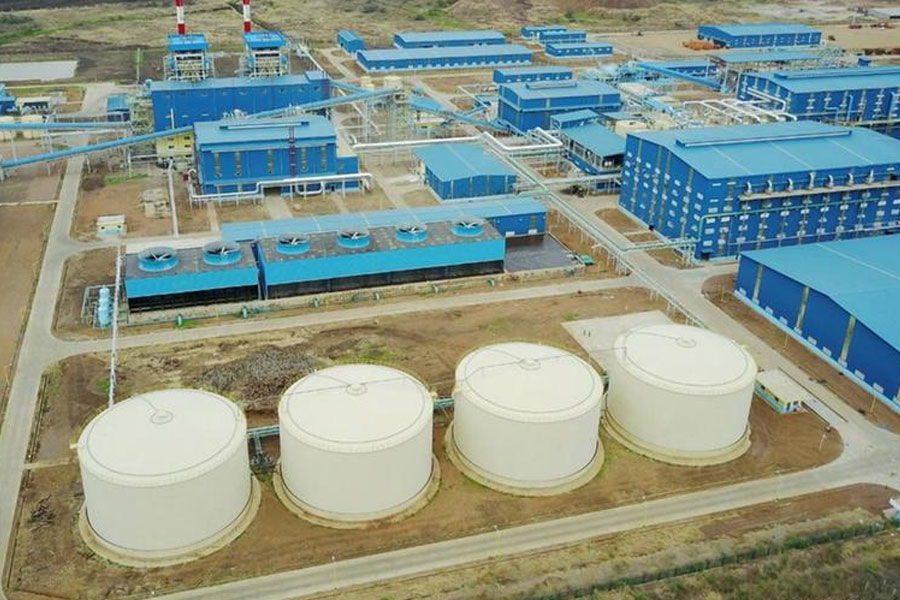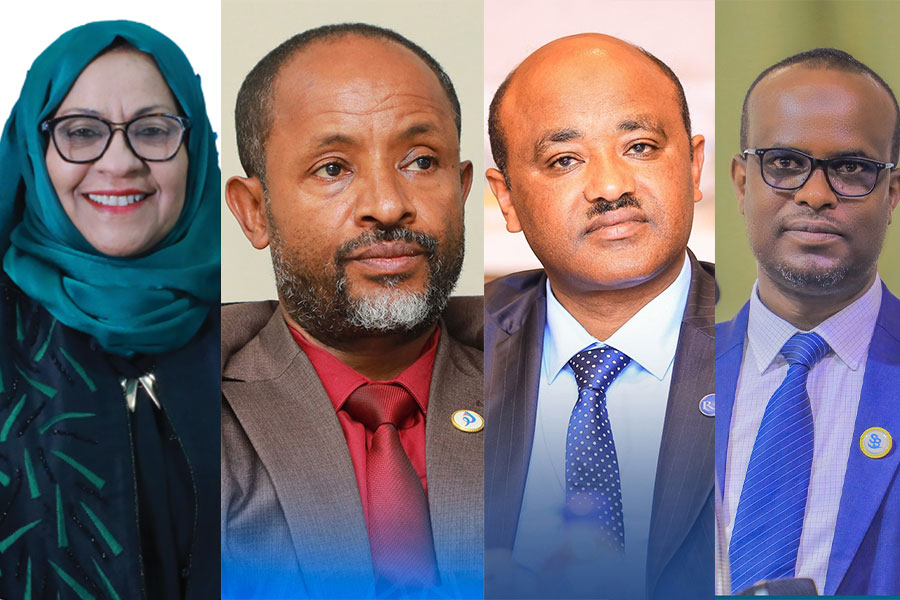
Editorial | Feb 12,2022
Sep 8 , 2024.
Prime Minister Abiy Ahmed’s (PhD) visit to China last week could mark a watershed moment for his country, not only because he led a large delegation to Beijing, but due to the broader context of Africa’s increasingly entrenched relationship with China. The event he attended, a forum hosted annually by Chinese President Xi Jinping, brought together a full roster of African leaders. Forums such as these, organised by other countries like the United States, India, and Japan, have become regular rendezvous points for African leaders.
However, the turnout to Beijing was an ironic contrast to Indonesia’s Africa forum, held in Jakarta during the same week, where no African leader was present. Indonesia’s nearly two billion dollar offer to promote trade and investment with Africa paled compared to China’s 51 billion-dollar pledge.
For Ethiopia's leaders, China represents more than an opportunity for diplomatic networking. Though the era of Beijing’s lavish loans may seem to have passed, China remains critical to Ethiopia’s economic fate. The days of China's vast loan programs may be winding down, yet it remains Ethiopia’s largest bilateral creditor, holding a quarter of Ethiopia’s 29-billion-dollar external debt. Securing a debt restructuring agreement with China, or even persuading Chinese authorities to extend further loans, is crucial. Failing to reach a deal with China — or other creditors, including international financial institutions — could be disastrous for Ethiopia, as it faces debt repayments of no less than four billion dollars next year.
Ethiopia’s economy is in no position to shoulder such a burden. The country has been gripped by macroeconomic imbalances that have worsened over time. While the roots of its economic malaise predate Abiy’s administration, the consequences of these issues are now coming to a head. If his administration fails to secure debt restructuring, the risk of a debt trap looms large, potentially leading to an economic meltdown.
In the short term, securing a positive outcome from China could provide Ethiopia's leaders with much-needed breathing room. It would also allow their public relations apparatus to present Ethiopia’s situation in a less gloomy light.
Depending on one’s perspective, the economic indicators can be portrayed as either a glass half-full or half-empty. According to the International Monetary Fund (IMF), the GDP grew by 7.2pc last year, one of the highest rates globally, and is projected to expand by 6.1pc next year. While still high, inflation is expected to decline from 32.5pc to 26.9pc in the coming year. These figures offer a glimmer of hope. Despite external opposition and criticisms, projects like the Grand Ethiopian Renaissance Dam (GERD) continue progressing. The Addis Abeba Corridor Development projects, designed to transform the capital into a modern hub, are entering their second phase.
However, these optimistic indicators obscure deeper structural problems that threaten the long-term viability of Ethiopia’s economic recovery.
The civil war in the north, which erupted in Tigray Regional State in 2020, may have subsided with the guns no longer being loud. But, the political tensions that sparked the conflict remain unresolved. The absence of negotiated settlements has led to ongoing militarised conflicts in the largest regional states of Amhara and Oromia. These conflicts are poorly managed, and their effects ripple through the economy, disrupting investment, construction, production, logistics, and transport.
These conflicts, which are becoming more complicated daily, have negatively affected Ethiopia’s standing with development partners and global economic indices. Yet, while urgent, these are not the sole impediment to Ethiopia’s economic recovery. The deeper, more fundamental challenges lie in the country’s structural and macroeconomic problems.
The economic slowdown, which began in 2015, reveals a web of interrelated issues. Persistent macroeconomic imbalances, chronic foreign exchange shortages, limited export diversification, and the fragility of the public investment model have undermined growth for the past decade. These problems reinforce each other, creating a cycle of stagnation that has proven difficult to break.
At the heart of economic woes is macroeconomic instability. Over the past several years, inflation has consistently exceeded 30pc, eroding household savings, stifling investments, and deepening poverty. The federal government’s fiscal deficits have become unsustainable, as revenues have failed to keep pace with its untamed expenditures. This has been exacerbated by ballooning external debt, much of it denominated in the US Dollar, which has made the economy vulnerable to fluctuations in global markets.
Inflation is closely linked to the persistent foreign exchange crunch. The scarcity of foreign currency has made it difficult to import essential goods, driving up prices and placing additional pressure on the economy. To make matters worse, the National Bank of Ethiopia (NBE) had adopted loose monetary policies in response to fiscal deficits, further fueling inflation. If there is a solace, the authorities have accepted as part of a deal with the IMF to tighten the monetary belt. The federal government cannot borrow from the central bank to pay for its insatiable appetite.
The foreign exchange crisis is arguably the most immediate and vexing economic constraint. A chronic trade deficit, driven by low export earnings and rising imports, has drained the foreign currency reserves, leading to a thriving parallel market for foreign exchange, although the premium over the official exchange rate has drastically dropped since the Birr'as market was floated. However, the shortage of foreign currency continued to make it difficult for businesses to import the raw materials and equipment they needed, impeding industrial production and slowing growth.
However, it is crucial not to lose sight of the fact that the foreign exchange shortage is a symptom of the narrow export base. The economy heavily relies on a few agricultural exports, such as coffee, sesame seeds, and cut flowers. The dependence has left Ethiopians vulnerable to external shocks, such as fluctuating global commodity prices and climate change. Policymakers will continue to struggle with foreign exchange shortages and the inflationary pressures created without diversifying the export base.
A lack of export diversification also limits the ability to create high-value jobs in industries like manufacturing, which could absorb the growing labour force and alleviate unemployment. The federal government should also focus on improving the efficiency of public investments, ensuring that future infrastructure projects are financially sustainable and demand-driven.
Though vital, the economy's structural reliance on agriculture has become a double-edged sword. While the sector has seen productivity gains in recent years, it remains highly vulnerable to climate-related shocks such as droughts and erratic rainfall. It needs further modernisation through climate-resilient farming practices, irrigation development, and land policy reforms to boost productivity and enhance food security.
Targeted policies to manage rural-to-urban migration could help ease the strain on cities and create more opportunities for rural workers.
The shadows of the state-led growth model that EPRDFites have pursued for two decades continue to show their limits. Massive public investments in infrastructure, particularly through state-owned enterprises like Ethiopian Electric Power (EEP) and Ethiopian Railways Corporation (ERC), have driven much of the economic growth. However, many of these enterprises are now heavily indebted, and the returns on investment have been underwhelming. The federal government’s borrowing to finance these projects has increased the national debt burden, particularly in foreign currency, and limited its ability to invest in other critical areas such as education and health.
Addressing these manifold crises undoubtedly required a shift in economic strategy. Encouraged by policy wonks in the IMF, Ethiopia's leaders are now on the road to embracing a dose of fiscal conservatism by reducing non-essential public expenditures and tightening monetary policy to control inflation. While austerity measures are never popular, they are seen as unavoidable to stabilise the macroeconomy and restore confidence in their fiscal management.
Policymakers should also prioritise export diversification to reduce dependence on a narrow range of agricultural commodities. Focusing on value-added industries, such as agro-processing and light manufacturing, could help the economy generate more foreign currency and create higher-paying jobs, ideally.
The long-term responses to the economic troubles lie in transitioning from a state-led growth model towards greater private sector involvement. Accelerating the modernisation of agriculture and manufacturing to solve the unproductive puzzle should be central to any viable strategy to overcome poverty. The source of urban and rural poverty is deeply interconnected, but with well-crafted reforms, policymakers can reignite growth and build a sustainable and inclusive economy.
PUBLISHED ON
Sep 08,2024 [ VOL
25 , NO
1271]

Editorial | Feb 12,2022

Radar | Oct 31,2020

Fortune News | Oct 05,2019

Viewpoints | Mar 21,2020

Radar | Jul 27,2025

Fortune News | Feb 05,2022

Fortune News | Feb 18,2023

Commentaries | Jun 18,2022

Radar | Mar 16,2019

Sunday with Eden | May 01,2020

Photo Gallery | 180019 Views | May 06,2019

Photo Gallery | 170213 Views | Apr 26,2019

Photo Gallery | 161216 Views | Oct 06,2021

My Opinion | 137240 Views | Aug 14,2021

Dec 22 , 2024 . By TIZITA SHEWAFERAW
Charged with transforming colossal state-owned enterprises into modern and competitiv...

Aug 18 , 2024 . By AKSAH ITALO
Although predictable Yonas Zerihun's job in the ride-hailing service is not immune to...

Jul 28 , 2024 . By TIZITA SHEWAFERAW
Unhabitual, perhaps too many, Samuel Gebreyohannes, 38, used to occasionally enjoy a couple of beers at breakfast. However, he recently swit...

Jul 13 , 2024 . By AKSAH ITALO
Investors who rely on tractors, trucks, and field vehicles for commuting, transporting commodities, and f...

Nov 2 , 2025
The National Bank of Ethiopia (NBE) has scrapped the credit-growth ceiling that had s...

Nov 2 , 2025 . By SURAFEL MULUGETA
The burgeoning data mining industry is struggling with mounting concerns following th...

Nov 2 , 2025 . By YITBAREK GETACHEW
Berhan Bank has chosen a different route in its pursuit of a new headquarters, opting for a transitional building instea...

Nov 2 , 2025 . By BEZAWIT HULUAGER
Nib International Bank S.C. has found itself at the epicentre of a severe governance...